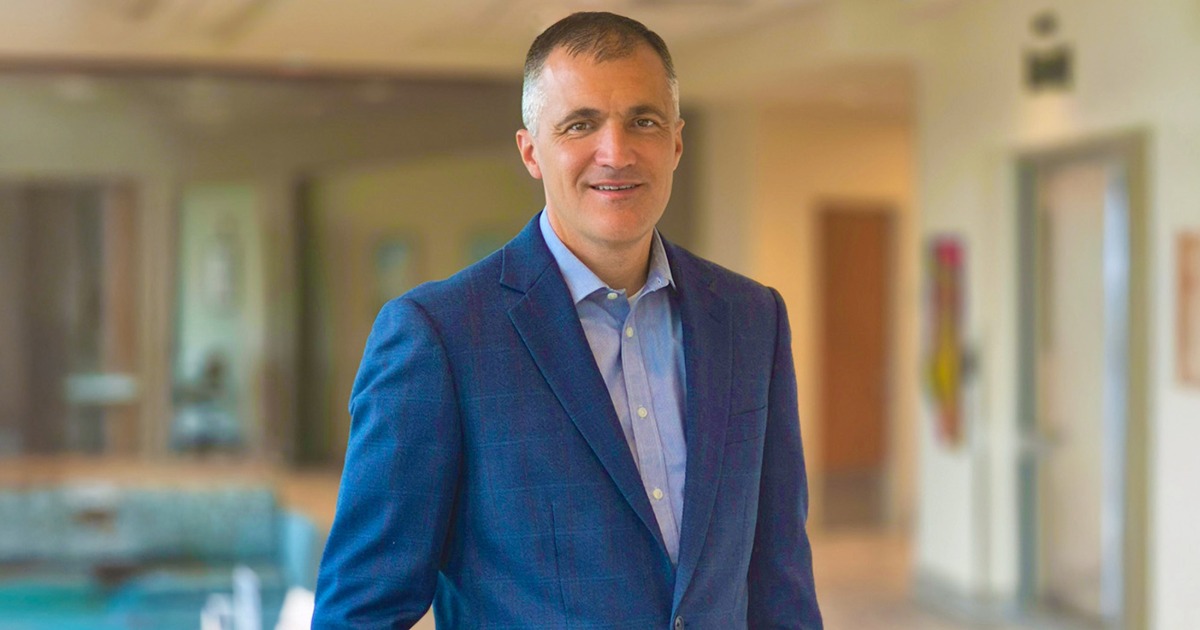The CDC will overhaul BioSense in November, amid a wave of new data-sharing tactics rolling in from other fields that promises to bolster surveillance methods and architectures.
Krista Hanni doesn't consider herself an expert on the latest developments in IT-enabled syndromic and biosurveillance, but she does recognize that a groundswell of change is about to hit the discipline.
0
0
1
26
154
MedTech Media
1
1
179
14.0
Normal
0
false
false
false
EN-US
JA
X-NONE
DefSemiHidden="true" DefQFormat="false" DefPriority="99"
LatentStyleCount="276">
UnhideWhenUsed="false" QFormat="true" Name="Normal" />
UnhideWhenUsed="false" QFormat="true" Name="heading 1" />
UnhideWhenUsed="false" QFormat="true" Name="Title" />
UnhideWhenUsed="false" QFormat="true" Name="Subtitle" />
UnhideWhenUsed="false" QFormat="true" Name="Strong" />
UnhideWhenUsed="false" QFormat="true" Name="Emphasis" />
UnhideWhenUsed="false" Name="Table Grid" />
UnhideWhenUsed="false" QFormat="true" Name="No Spacing" />
UnhideWhenUsed="false" Name="Light Shading" />
UnhideWhenUsed="false" Name="Light List" />
UnhideWhenUsed="false" Name="Light Grid" />
UnhideWhenUsed="false" Name="Medium Shading 1" />
UnhideWhenUsed="false" Name="Medium Shading 2" />
UnhideWhenUsed="false" Name="Medium List 1" />
UnhideWhenUsed="false" Name="Medium List 2" />
UnhideWhenUsed="false" Name="Medium Grid 1" />
UnhideWhenUsed="false" Name="Medium Grid 2" />
UnhideWhenUsed="false" Name="Medium Grid 3" />
UnhideWhenUsed="false" Name="Dark List" />
UnhideWhenUsed="false" Name="Colorful Shading" />
UnhideWhenUsed="false" Name="Colorful List" />
UnhideWhenUsed="false" Name="Colorful Grid" />
UnhideWhenUsed="false" Name="Light Shading Accent 1" />
UnhideWhenUsed="false" Name="Light List Accent 1" />
UnhideWhenUsed="false" Name="Light Grid Accent 1" />
UnhideWhenUsed="false" Name="Medium Shading 1 Accent 1" />
UnhideWhenUsed="false" Name="Medium Shading 2 Accent 1" />
UnhideWhenUsed="false" Name="Medium List 1 Accent 1" />
UnhideWhenUsed="false" QFormat="true" Name="List Paragraph" />
UnhideWhenUsed="false" QFormat="true" Name="Quote" />
UnhideWhenUsed="false" QFormat="true" Name="Intense Quote" />
UnhideWhenUsed="false" Name="Medium List 2 Accent 1" />
UnhideWhenUsed="false" Name="Medium Grid 1 Accent 1" />
UnhideWhenUsed="false" Name="Medium Grid 2 Accent 1" />
UnhideWhenUsed="false" Name="Medium Grid 3 Accent 1" />
UnhideWhenUsed="false" Name="Dark List Accent 1" />
UnhideWhenUsed="false" Name="Colorful Shading Accent 1" />
UnhideWhenUsed="false" Name="Colorful List Accent 1" />
UnhideWhenUsed="false" Name="Colorful Grid Accent 1" />
UnhideWhenUsed="false" Name="Light Shading Accent 2" />
UnhideWhenUsed="false" Name="Light List Accent 2" />
UnhideWhenUsed="false" Name="Light Grid Accent 2" />
UnhideWhenUsed="false" Name="Medium Shading 1 Accent 2" />
UnhideWhenUsed="false" Name="Medium Shading 2 Accent 2" />
UnhideWhenUsed="false" Name="Medium List 1 Accent 2" />
UnhideWhenUsed="false" Name="Medium List 2 Accent 2" />
UnhideWhenUsed="false" Name="Medium Grid 1 Accent 2" />
UnhideWhenUsed="false" Name="Medium Grid 2 Accent 2" />
UnhideWhenUsed="false" Name="Medium Grid 3 Accent 2" />
UnhideWhenUsed="false" Name="Dark List Accent 2" />
UnhideWhenUsed="false" Name="Colorful Shading Accent 2" />
UnhideWhenUsed="false" Name="Colorful List Accent 2" />
UnhideWhenUsed="false" Name="Colorful Grid Accent 2" />
UnhideWhenUsed="false" Name="Light Shading Accent 3" />
UnhideWhenUsed="false" Name="Light List Accent 3" />
UnhideWhenUsed="false" Name="Light Grid Accent 3" />
UnhideWhenUsed="false" Name="Medium Shading 1 Accent 3" />
UnhideWhenUsed="false" Name="Medium Shading 2 Accent 3" />
UnhideWhenUsed="false" Name="Medium List 1 Accent 3" />
UnhideWhenUsed="false" Name="Medium List 2 Accent 3" />
UnhideWhenUsed="false" Name="Medium Grid 1 Accent 3" />
UnhideWhenUsed="false" Name="Medium Grid 2 Accent 3" />
UnhideWhenUsed="false" Name="Medium Grid 3 Accent 3" />
UnhideWhenUsed="false" Name="Dark List Accent 3" />
UnhideWhenUsed="false" Name="Colorful Shading Accent 3" />
UnhideWhenUsed="false" Name="Colorful List Accent 3" />
UnhideWhenUsed="false" Name="Colorful Grid Accent 3" />
UnhideWhenUsed="false" Name="Light Shading Accent 4" />
UnhideWhenUsed="false" Name="Light List Accent 4" />
UnhideWhenUsed="false" Name="Light Grid Accent 4" />
UnhideWhenUsed="false" Name="Medium Shading 1 Accent 4" />
UnhideWhenUsed="false" Name="Medium Shading 2 Accent 4" />
UnhideWhenUsed="false" Name="Medium List 1 Accent 4" />
UnhideWhenUsed="false" Name="Medium List 2 Accent 4" />
UnhideWhenUsed="false" Name="Medium Grid 1 Accent 4" />
UnhideWhenUsed="false" Name="Medium Grid 2 Accent 4" />
UnhideWhenUsed="false" Name="Medium Grid 3 Accent 4" />
UnhideWhenUsed="false" Name="Dark List Accent 4" />
UnhideWhenUsed="false" Name="Colorful Shading Accent 4" />
UnhideWhenUsed="false" Name="Colorful List Accent 4" />
UnhideWhenUsed="false" Name="Colorful Grid Accent 4" />
UnhideWhenUsed="false" Name="Light Shading Accent 5" />
UnhideWhenUsed="false" Name="Light List Accent 5" />
UnhideWhenUsed="false" Name="Light Grid Accent 5" />
UnhideWhenUsed="false" Name="Medium Shading 1 Accent 5" />
UnhideWhenUsed="false" Name="Medium Shading 2 Accent 5" />
UnhideWhenUsed="false" Name="Medium List 1 Accent 5" />
UnhideWhenUsed="false" Name="Medium List 2 Accent 5" />
UnhideWhenUsed="false" Name="Medium Grid 1 Accent 5" />
UnhideWhenUsed="false" Name="Medium Grid 2 Accent 5" />
UnhideWhenUsed="false" Name="Medium Grid 3 Accent 5" />
UnhideWhenUsed="false" Name="Dark List Accent 5" />
UnhideWhenUsed="false" Name="Colorful Shading Accent 5" />
UnhideWhenUsed="false" Name="Colorful List Accent 5" />
UnhideWhenUsed="false" Name="Colorful Grid Accent 5" />
UnhideWhenUsed="false" Name="Light Shading Accent 6" />
UnhideWhenUsed="false" Name="Light List Accent 6" />
UnhideWhenUsed="false" Name="Light Grid Accent 6" />
UnhideWhenUsed="false" Name="Medium Shading 1 Accent 6" />
UnhideWhenUsed="false" Name="Medium Shading 2 Accent 6" />
UnhideWhenUsed="false" Name="Medium List 1 Accent 6" />
UnhideWhenUsed="false" Name="Medium List 2 Accent 6" />
UnhideWhenUsed="false" Name="Medium Grid 1 Accent 6" />
UnhideWhenUsed="false" Name="Medium Grid 2 Accent 6" />
UnhideWhenUsed="false" Name="Medium Grid 3 Accent 6" />
UnhideWhenUsed="false" Name="Dark List Accent 6" />
UnhideWhenUsed="false" Name="Colorful Shading Accent 6" />
UnhideWhenUsed="false" Name="Colorful List Accent 6" />
UnhideWhenUsed="false" Name="Colorful Grid Accent 6" />
UnhideWhenUsed="false" QFormat="true" Name="Subtle Emphasis" />
UnhideWhenUsed="false" QFormat="true" Name="Intense Emphasis" />
UnhideWhenUsed="false" QFormat="true" Name="Subtle Reference" />
UnhideWhenUsed="false" QFormat="true" Name="Intense Reference" />
UnhideWhenUsed="false" QFormat="true" Name="Book Title" />
“We're at the beginning of a new field here,” said Hanni, the surveillance and preparedness manager for the Monterey County, Calif., Public Health Department. “That’s what we’re running into.”
The traditional epidemiological approach, which helps public health officials deal in an authoritative but delayed manner with outbreaks and disease caused by calamities, is being challenged by new forms of data and new approaches using methodologies from other fields.
Researchers and clinicians will see a huge boon in November, when the Centers for Disease Control and Prevention’s redesigned BioSense program is scheduled to go live with a new data-sharing approach in which local jurisdictions – not the CDC – maintain ownership of their data. Coincidentally or not, the new willingness to research and perhaps use new data types and methodologies will converge with meaningful use mandates set out in the HITECH funding.
[Cover story: ICD-10's ten-year reign of fear.]
“BioSense will help the community ‘open for business,’” said Taha Kass-Hout, the CDC’s deputy director for information science and program manager for BioSense. “That is, any health department in the country could ask their providers to share healthcare information with them in a meaningful use-ready environment. That will remove a lot of the barriers from the providers as well as the health departments.”
What’s more, Hanni co-authored a recent report evaluating the CDC’s Early Aberration Reporting System’s (EARS) performance in detecting the H1N1 influenza that was published in Statistics, Politics, and Policy in tandem with researchers from the Naval Postgraduate School in Monterey. That partnership that may serve as a microcosm for a new model of collecting and sharing syndromic surveillance data in which local and regional health departments share much more power with the federal government.
BioSense and that new model could, in turn, open many new sources of data to improve surveillance methods and architectures.
First data already out
The CDC is offering the financial resources to make this new model available as well. In the 2010 fiscal year, only $3 million of the BioSense program’s $27 million overall budget was dedicated to state and local health departments. Evidence of that is changing: Local jurisdictions received $7.5 million of a $26 million 2011 budget; the proposed 2012 budget calls for $10 million to go to state and local health departments out of $25 million overall.
Indeed, the first local BioSense data under the new concept has already been posted by the Tarrant County, Texas, Public Health Department. The data, hosted on the Google Public Data Explorer platform, includes aggregated figures of emergency room illnesses, including gastro-intestinal illness, rashes, heat-related illness and upper respiratory issues in a six-county area of northeastern Texas.
The data can be accessed by anybody – other health departments, first responders, clinicians, even the general public.
“There is plotting or mapping software that can help a lay person see at a glance, conceptually, what is going on in their area and whether they may be fitting into a demographic or may be an isolated case,” said Bill Stephens, manager of the Southwest Center for Advanced Public Health Practice in Tarrant County. “They can ask themselves, using this data, ‘Is my situation fitting into this category or should I be going to the doctor because I'm the only one who seems to have this problem?’ People can actually look at, and make use of, syndromic surveillance data in making their own health decisions.”
The new BioSense architecture, and the upcoming wellspring of data spawned by meaningful use requirements, is meant for far more than letting prudent laypeople gauge whether their sniffle might be a cold or something more sinister. David Buckeridge, associate professor of epidemiology, biostatistics and occupational health at McGill University in Montreal and a member of the BioSense redesign's expert advisory panel, said the new approach signals a diametric change from the origins of mandated biosurveillance in that the new user-centered development process and the federated IT concept may help public health officials who have been hesitant to share data change their minds.
“Historically, the way syndromic surveillance as an example of automated surveillance came into being in public health has left a bad taste in the mouth of a lot of people in public health,” Buckeridge said, “because it came mainly out of bio-terror funding. And it was sort of dedicated funding when health departments felt they had other more pressing issues they couldn't fund – ‘For crying out loud, I can't fund my preventive child health program, but you’re telling me to do bio-terror surveillance’ – so they think of syndromic surveillance as bio-terror surveillance.”
The paucity of surveillance data related to bio-terror attacks has made justifying the emphasis on that vector quite difficult, if not controversial. The 2001 anthrax attacks, which directly resulted in the deaths of five people and sickened 22 to 68 others (that figure is in dispute) are an example. Such a small cohort falls well outside an area of great potential for a richer environment of surveillance data: The employment of statistical methodologies to try to predict a disease’s virulence and travel vectors.
“There’s no reason to expect a statistical algorithm has any chance of catching that,” said Naval Postgraduate School researcher Ron Fricker, co-author of the EARS evaluation paper on which Hanni worked and the author of “Some Methodological Issues in Biosurveillance,” published earlier this year in Statistics in Medicine.
The EARS paper, Fricker added, could serve as an example of the potential of local health departments sharing data with academic researchers to improve reporting tools' performance for a specific disease, no matter where it may emerge.
“It was maybe a first step in that direction for a particular location, for a particular disease, at a particular point in time,” he said.
“There are, or should be, a lot of qualifications. We need more study, more broadly, for which we do things like look at different definitions of things like influenza-like illness to try to understand which ones have the most signal in them.”
The availability of more granular data for more research may also help better overall design of biosurveillance systems, Fricker said.
“It seems like these systems have often been put together in a sort of ad hoc fashion,” he said, “not from the point of view of, ‘What are we trying to detect, and what is the data being used for, and how do we build a system around that?’ We go from the point of view of ‘We need to detect stuff, let’s put something together, here’s some convenient data, let's feed that into it.’ A systems engineer would be in horror because it’s not approached from a mature system design point of view.”
Ironically enough, it may be BioSense's new bottom-up approach that will ultimately lead to better biosurveillance system design, because more local jurisdictions will feel more comfortable sharing data with researchers, without feeling burdened to conduct research themselves.
“We're each our own little crucibles,” Hanni said “We're talking here about maybe expanding to a few more counties locally, or partnering with other academic institutions to get more of the computer science aspect – but at the same time, we are not a research institution for public health, so we need to be doing it for our daily routine. And if we can do more on the side to help advance the field, that's where I see, as a local smaller health department, where I can get support for that role.”
Cloud and federated governance on tap
Numerous public health organizations, including the Association of State and Territorial Health Officials (ASTHO), the National Association of County and City Health Officials (NACCHO), the Council of State and Territorial Epidemiologists (CSTE), the International Society for Disease Surveillance (ISDS) and the CDC, will craft the governance mechanism for the new program.
Partnerships between the agencies are widening the pool of stakeholders both in governance and technology, according to the CDC’s Kass-Hout. ASTHO will be responsible for the new collaborative environment, which will be cloud-based, with a mix of open source and proprietary platforms. CSTE is drafting a data use agreement that will ease local officials' concerns about sharing data.
“It doesn't force anybody to do it, but gives them the option to do it,” Kass-Hout said. “The user interface could be as simple as ‘Click this box and data will be available publicly or for research.’ That subset will pretty much be like the ED data in Tarrant County, stripped of identifiers, and maybe aggregated, but in a meaningful way. And CSTE will be working with CDC and ISDS to really give us their best advice to the language to advance research and science.”
Kass-Hout is optimistic the new BioSense may signal the beginning of a truly mature biosurveillance strategy, one based on mutual trust.
“Local and state health departments have the best relationship with providers. They understand the context in which an event has happened, and they understand their population more than anybody else,” Kass-Hout said. “So if we can make sure they have ownership of that data and the initial vetting of it is there, that would be the basis to truly start stitching a regional and national picture.”


